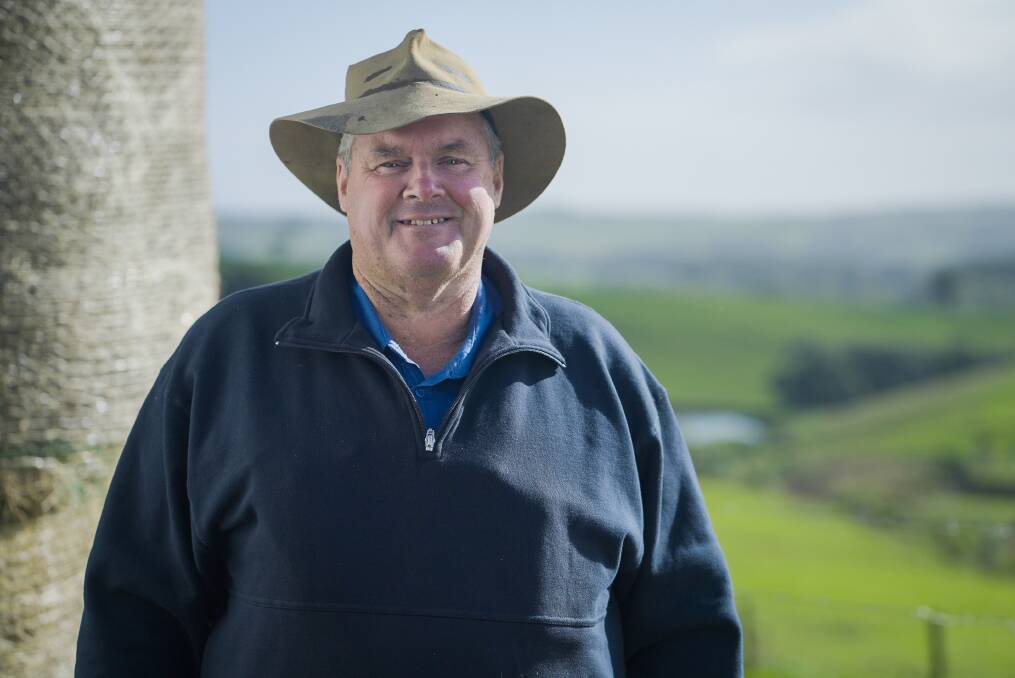Livestock is the second highest killer on farms - keep yourself and others safe in the yards

This is branded content for WorkSafe Victoria
"I know my cattle service contractors really well, we have a really good relationship and I consider them to be my friends. As a farmer, it's my job to keep everybody who comes on the farm safe," Peter Miller, Almurta cattle farmer.
WorkSafe Victoria's 'It's never you, until it is' campaign is running across regional channels, focusing on managing fatigue on the farm, checking you've got the right safety gear for the job, strategies to stay safe working alone and safer cattle handling.
New cattle handling information encourages farmers to make achievable changes to keep everyone safe on farms, with the motto 'It's the least I can do'.
Developed alongside the cattle industry, the new resources aim to keep farm businesses running smoothly and efficiently with safety in mind, so all those working with cattle can return home safely each day.
WorkSafe has revealed that cattle handling is the second most common cause of workplace death on Victorian farms, claiming five lives since 2018, while an average of almost one person every week is injured seriously enough while working with cattle to receive workers compensation.
Almurta cattle farmer Peter Miller is a first-generation farmer who has spent the past 15 years breeding cows and calves.
As a farmer with homemade yards, Peter has worked on getting his facilities as good as they can be.
"Stockyards are a dangerous place," he says.
"I was loading cattle myself one day in the race, where you shouldn't be, but there was no other option because of the way it was designed and built.
"The worst thing happened because a heifer was coming out of that truck, and there was nowhere for me to go.
"I was quite lucky that she wasn't big and we managed to both pass one another in the race but if she had knocked me down, she would have gone straight over the top of me.
"The lucky people can tell you a story like that."
Near-miss experiences like this are part of the reason Peter has since made changes to how he and livestock transporters load cattle on his property.
"When we first started in Almurta the stockyards were reasonable, but there was no walkway. We're now in the process of upgrading the loading ramp," he says.
"We're putting a walkway down the side, gates at the front, an end gate and a walkway around the force pen.
"This will mean there's no need for the truck driver to be behind or in with the cattle at any time. It'll be a lot safer for transporters."
But Peter knows it's not just yard design and maintenance that keeps farmers safe.
Awareness of your surroundings and understanding the animals you work with are essential components of farm safety.
"In the yard you need to be careful with cows and have cattle awareness. That's more than anything else - being aware of where you are, and always having a plan B.
"You've always got to be thinking one step ahead of yourself, not one step behind."
WorkSafe's initial promotion of the new resources encourages small improvements for big wins in safety and efficiency, with a focus on yard maintenance, surfaces and gates and latches.
There's further information on mustering, drafting, crushes, loading and unloading, cattle behaviour, designing cattle yards, and safety responsibilities - for both the farmer and cattle service businesses.
The resources also include a printable checklist to help you evaluate the safety of yards and identify any improvement areas.

For Timboon livestock agent Tim Nowell, experiencing a workplace fatality has given him a unique perspective on safety that differs from many other experienced agents and farmers.
This is why he's passionate about sharing his perspective, particularly with the next generation.
As agriculture continues to evolve and new people enter the industry, Tim sees an opportunity to embed a positive safety culture in future farmers and agents.
"I think it's important that we make sure livestock agents feel comfortable having safety conversations with farmers," Tim says.
"If younger stock agents go to stockyards now and they think something's not right, they will ring me, or they'll get me to go out and have a look at it.
"It's about changing people's mindset."
Tim knows farmers are ultimately responsible for the safety of people who visit and work on their properties, but he also believes open dialogue between farmers and agents is essential to safer farms now and in the future.
"The most dangerous part of my work is the unknown," he says.
"Having conversations with farmers is essential to being able to evaluate how safe a situation is and being able to take yourself out of something that isn't as safe as it should be."
Tim's experiences have left him with an approach that he wants to share with other agents and farmers who might not prioritise safety.
"If we start doing work on-farm and we see something that's not right, or not working, we have that conversation with the farmer and ask them to fix it before we continue or make these upgrades," he says.
"Ninety nine per cent of farmers are open to that and they will do what we ask.
"Providing safety feedback - as part of a safety culture - to our clients and farmers is critically important."
Tim's final message for livestock agents and farmers alike is, "If it's not safe, make it safe. If you can't make it safe, don't do it."
To find more information about WorkSafe's new safer cattle handling click HERE
How well do you know your farm, livestock and machinery? Take the quiz...
This is branded content for WorkSafe Victoria


